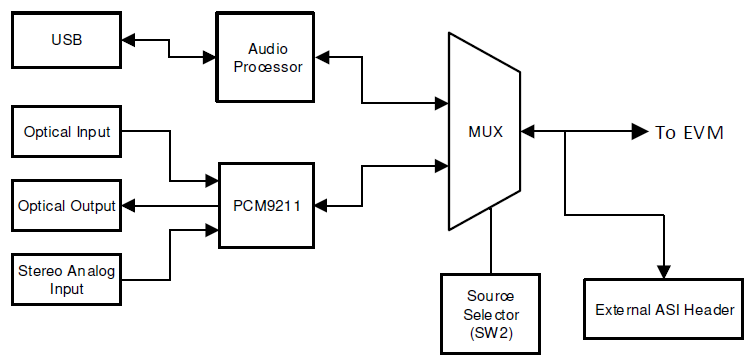SLAU903 October 2023
- 1
- Description
- Get Started
- Features
- Applications
- 6
- 1Evaluation Module Overview
- 2Hardware
-
3Software
- 3.1 Software Description
- 3.2 PurePath Console 3 Installation
- 3.3 TAx5x1x-Q1 EVM GUI
- 3.4 Configuration Examples
- 3.5 System Overview
- 4Hardware Design Files
- 5Additional Information
- 6References
2.2.1 Audio Serial Interface Settings
The AC-MB provides the digital audio signals to the evaluation module from the universal serial bus (USB), optical jack, stereo audio jack, and external audio serial interface (ASI) header. Figure 3-2 shows a block diagram of the ASI routing on the AC-MB.
 Figure 2-2 AC-MB Audio Interface Block Diagram
Figure 2-2 AC-MB Audio Interface Block DiagramSwitch SW2 on the AC-MB selects the audio serial bus that interfaces with the PCM6xx0EVM. Next to switch SW2, the AC-MB has a quick reference table to identify the audio serial interface source options and switch settings. The AC-MB acts as the controller for the audio serial interface, with three different modes of operation: USB, optical or analog, or external ASI.
The serial interface clocks and data are provided from the USB interface. The sampling rate and format are determined by the USB audio class driver on the operating system. The default settings for the USB audio interface are 32-bit frame size, 48-kHz sampling rate, BCLK and FSYNC ratio is 256, and the format is time division multiplexing (TDM).